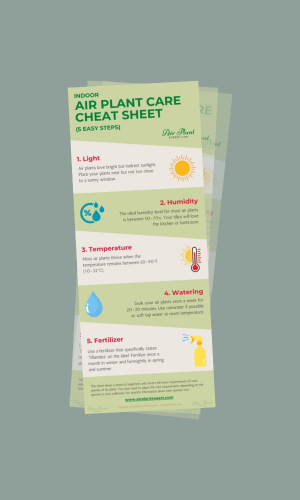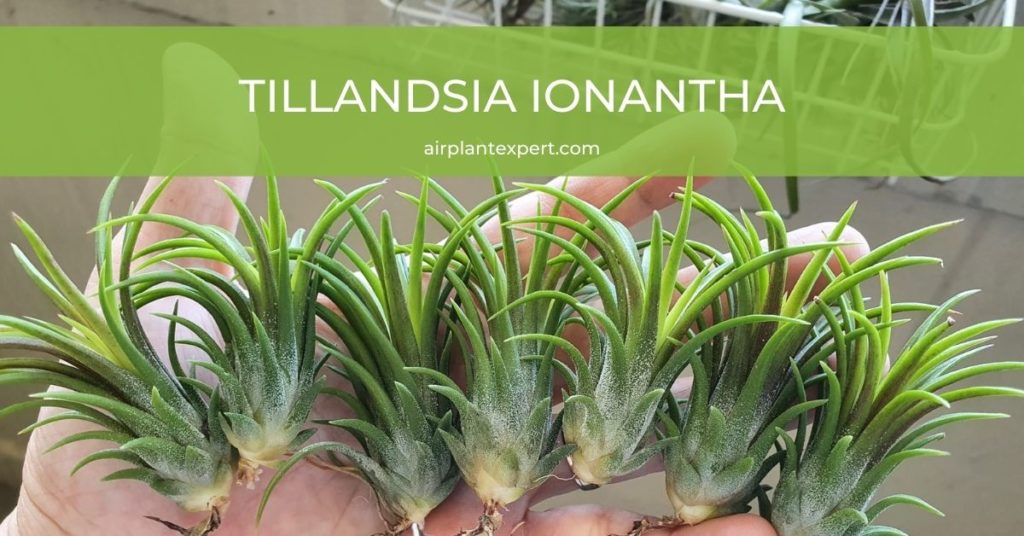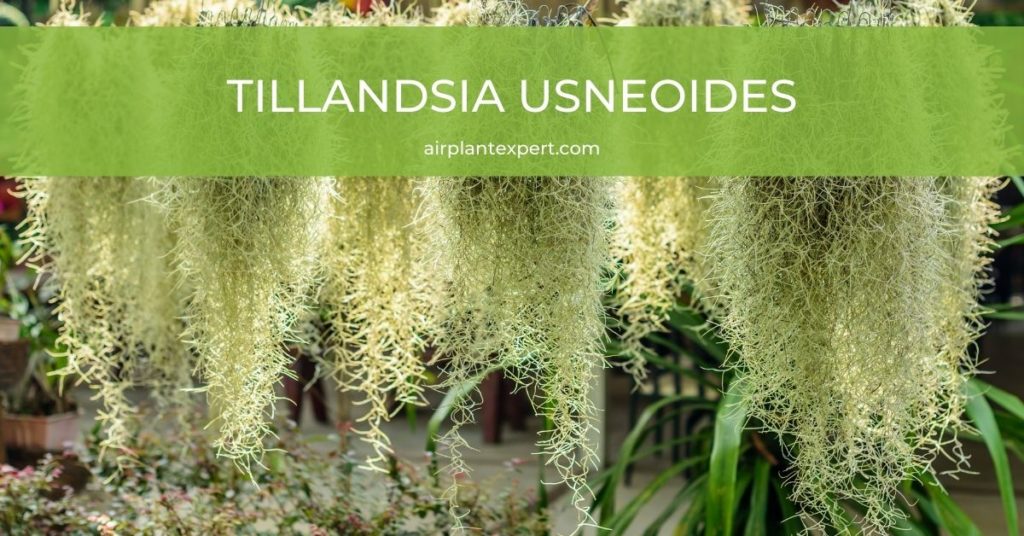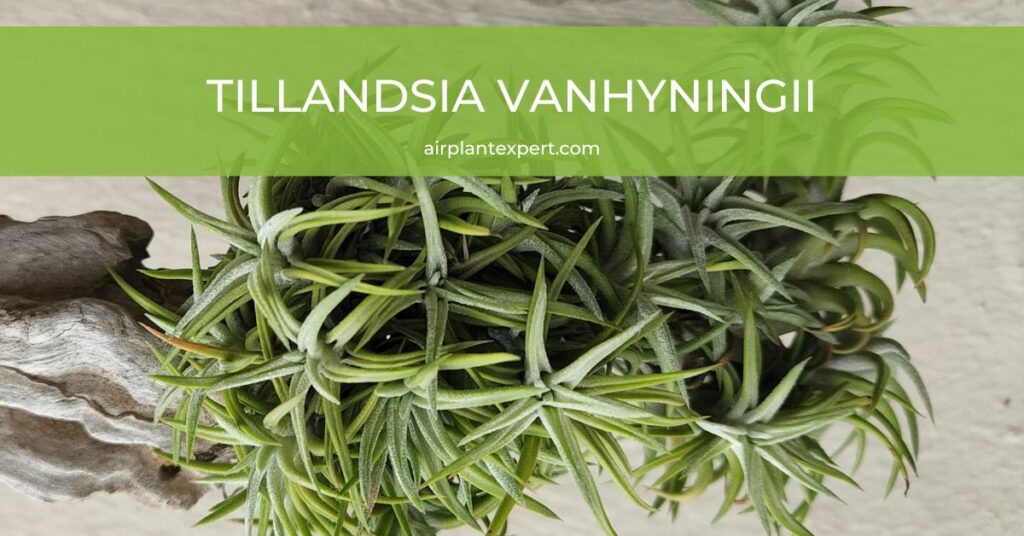Welcome to the wonderful world of Tillandsia Ionantha. A small but stunning air plant with many varieties and hybrids. Popular varieties include Guatemala, Stricta, Fuego, Mexican, and Rubra.
- Quick Guide
- Tillandsia Ionantha Varieties
- Tillandsia Ionantha var. Ionantha (Guatemala)
- Tillandsia Ionantha var. Stricta (Rosita)
- Tillandsia Ionantha var. Maxima (Huamelula)
- Tillandsia Ionantha var. Rubra
- Tillandsia Ionantha var. Fuego
- Tillandsia Ionantha var. Mexican
- Tillandsia Ionantha var. Druid
- Tillandsia Ionantha var. Peach
- Tillandsia Ionantha var. Vanhyningii
- Tillandsia Ionantha var. Scaposa
- Tillandsia Ionantha Hybrids
Quick Guide
Tillandsia Ionantha Varieties
There are currently two officially recognized Ionantha varieties, Ionantha var. Ionantha and Ionantha var. Stricta (Koide). However, there are many unofficial varieties found in nature and even more man/woman-made hybrids.
Ionantha var. Ionantha is also known as Ionantha Guatemala and is the most common variety. It’s native to Guatemala, Costa Rica, Honduras, and Mexico, and has naturalized in parts of Florida.
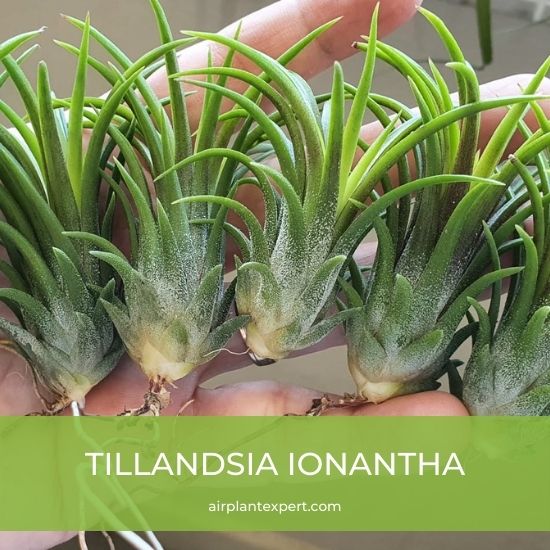
Ionantha is very adaptable and survives in a wide range of conditions and will thrive when grown indoors. Ionantha loves bright light and warm humid conditions.
Although they all share similar characteristics, each variety of Ionantha also has its own set of unique characteristics and they do look quite different.
For detailed information about each variety, you can click the links below to their specific pages.
Ionantha classification is forever changing so if you notice an error below please get in touch so I can update any changes.
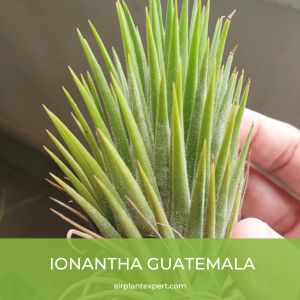
Tillandsia Ionantha var. Ionantha (Guatemala)
Also known as Ionantha Guatemala this variety is native to Guatemala and Central America. In nature, Guatemala readily grows into large clumps of plants and looks absolutely stunning when they flower simultaneously. The central leaves turn scarlet red or pink before blooming and no doubt give rise to this specie’s popularity.
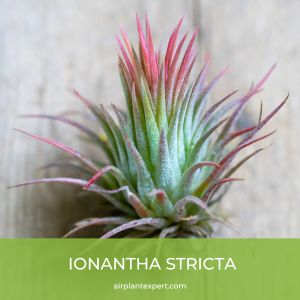
Tillandsia Ionantha var. Stricta (Rosita)
This variety used to be called Ionantha Rosita, however, the name was changed to Ionantha var. Stricta in 1993. Ionantha Stricta will maintain its deep red blushing color all year round given adequate light. This variety is endemic to one region in Oaxaca, Mexico, and is mostly found growing on old oak trees.
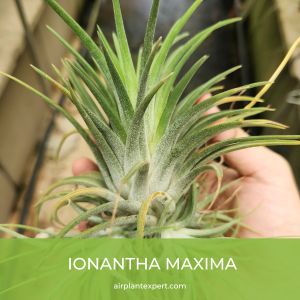
Tillandsia Ionantha var. Maxima (Huamelula)
Tillandsia Ionantha Maxima is also known as Ionantha Huamelula and is the largest variety of Ionantha. In nature, Maxima grows on lava rocks on the West Coast of the Southern State of Oaxaca, Mexico. This variety has beautiful green foliage that forms a symmetrical rosette and blushes pink rather than red.

Tillandsia Ionantha var. Rubra
Ionantha Rubra is of course closely related to Ionantha Guatemala, however, Rubra has softer leaves with fewer trichomes and prefers more humid environments. This variety has yellow-green downward curling leaves and a symmetrical open rosette that resembles a tiny pineapple. Ionantha Rubra is a stunning air plant.
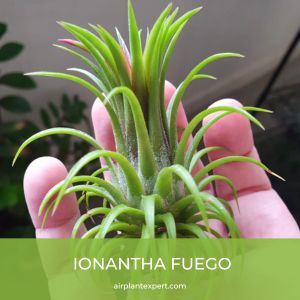
Tillandsia Ionantha var. Fuego
Tillandsia Ionantha Fuego is said to be the reddest of all the varieties of Ionantha. The vibrant fiery red foliage lasts several weeks during blooming and can persist throughout the year. Fuego has short, stiff, upright leaves and overall the foliage looks quite delicate. Ionantha Fuego is a delightful little firecracker.
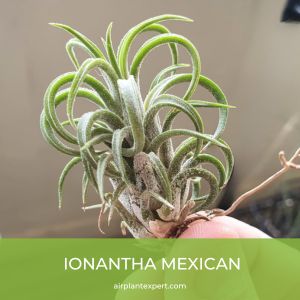
Tillandsia Ionantha var. Mexican
Ionantha Mexican is said to be the hardiest of the Ionanthas and often grows more quickly than other varieties. Mexican is the smallest of the Ionantha and has short thick bright green leaves that are evenly covered in trichomes. When in bloom, the leaves tend to blush a pinkish-red color rather than the deeper red of Fuego.

Tillandsia Ionantha var. Druid
Tillandsia Ionantha Druid is unique and believed to be an albino form of Ionantha. This variety doesn’t blush red before blooming instead the leaves turn a bright yellowish-white and/or peach color. Also, Ionantha Druid displays striking white flowers instead of the usual purple flowers grown by most varieties of Ionantha.
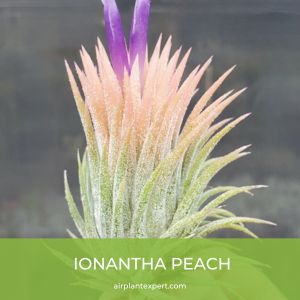
Tillandsia Ionantha var. Peach
Ionantha Peach is native to Taxco in Mexico and is similar in size and shape to Ionantha var. Ionantha. Peach has softer pale green leaves that blush, you guessed it, a peachy color before and during blooming. Ionantha Peach flowers are typical of most varieties of Ionantha and grow into long violet or purple tubular structures.
Tillandsia Ionantha var. Vanhyningii
Previously thought to be a variety of Ionantha, this plant used to be known as Tillandsia Ionantha var. Vanhyningii. However, this variety is now considered a species in its own right and was renamed Tillandsia Vanhyningii.
Tillandsia Ionantha var. Scaposa
Previously thought to be a variety of Ionantha, this plant used to be known as Tillandsia Ionantha var. Scaposa and Tillandsia Kolbii. However, this variety is now considered a species in its own right and was renamed Tillandsia Scaposa.

Get Your FREE Air Plant Care Cheat Sheet
5 easy steps to keep your air plants happy and healthy.
Tillandsia Ionantha Hybrids
Hybridization often occurs randomly in nature when pollen is carried by the wind and insects from one species of plant to another species. However, it is more common for plant nurseries and enthusiastic collectors to create new hybrids.
By carefully selecting two plants with different but desirable features they’re able to produce a new hybrid that has the best features from both parent plants. Ionantha’s attractive foliage and flowers make it a good choice for hybridization.
The process involves crossing two genotypes. This typically means crossbreeding two species that are within the same genus. The process is known as cross-pollination and can produce spectacular hybrids.
Cross-pollination is when pollen from one plant’s flower, the male part, the stamen, is used to pollinate a different plant’s flower, the female part, the pistil. The transfer of pollen stimulates the production of seeds which eventually grow into new hybrids.
To find out which varieties of Ionantha have been cross-pollinated and hybridized click on your favorite varieties above.

